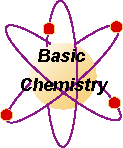Battery
Purpose:
You will make a simple battery that can light a flashlight bulb or if you put six batteries in series, then you can run a 9 volt radio.
Materials:
50 ml beakers or baby food jars
- magnesium strips and copper strips (shine with steel wool or emery paper)
- sodium sulfate solution (71g/liter) or 1/4 teaspoon per jar of water
- wire, flashlight bulb with holder (Radio Shack)
- paper towel
You will make a simple battery that can light a flashlight bulb or if you put six batteries in series, then you can run a 9 volt radio.
50 ml beakers or baby food jars
- magnesium strips and copper strips (shine with steel wool or emery paper)
- sodium sulfate solution (71g/liter) or 1/4 teaspoon per jar of water
- wire, flashlight bulb with holder (Radio Shack)
- paper towel
Procedure:
Cut the metal strips so they will project one inch above the jar when touching the bottom.
For the radio do the following:
- Connect the wire from the first magnesium strip to (-) contact of the radio.
- Connect the wire from the copper strip to the magnesium strip of the next cell.
- Keep connecting the copper strips to the magnesium strips of the rest of the cells.
- In the last cell the copper strip should be connected to the (+) terminal of the radio.
Discussion:
If the radio doesn't work, check your setup with the flashlight bulb. If the bulb works, then switch the wires connected to the radio. If the bulb doesn't work recheck all connections and the salt bridges.


